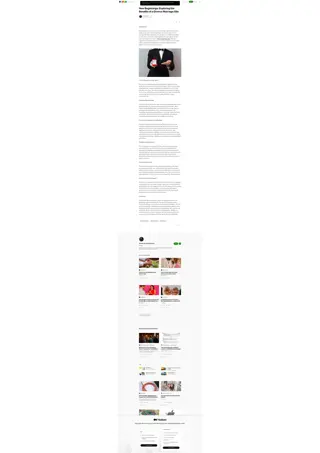Navigating the Evolving TV Landscape: Embracing Change
As TV undergoes significant transformations, local TV media reps must adapt and educate advertisers on the evolving media landscape. The rise of smart TVs, streaming services, and consumer preferences for content highlight the need for a strategic approach in guiding stakeholders through these changes. Embracing innovation and leveraging the power of smart TVs as control hubs in households can lead to new opportunities for viewers, stations, advertisers, and media representatives.
Download Presentation

Please find below an Image/Link to download the presentation.
The content on the website is provided AS IS for your information and personal use only. It may not be sold, licensed, or shared on other websites without obtaining consent from the author.If you encounter any issues during the download, it is possible that the publisher has removed the file from their server.
You are allowed to download the files provided on this website for personal or commercial use, subject to the condition that they are used lawfully. All files are the property of their respective owners.
The content on the website is provided AS IS for your information and personal use only. It may not be sold, licensed, or shared on other websites without obtaining consent from the author.
E N D
Presentation Transcript
TV Is Changing and Youre One of the Leaders With the increasing fragmentation of all media, and specifically TV, your role as a local TV media rep must also evolve. You must also be an educator and advisor to guide local advertisers through the media maze. Your efforts start with no apologies for how TV is changing. Change is not only inevitable, but also welcomed, as it is often the catalyst for something new and something better for your local prospects and advertisers. This month s Special Report focuses on some of those changes, why you and your station have no reasons to apologize and why what is emerging will be of significant benefit to viewers, stations, advertisers and media reps.
Still the Best Seat in the House The TV is still the primary viewing device in American households. According to TiVo s Video Trends Report Q4 2019, 30.7% of survey respondents ranked their smart TV as their most popular streaming device, with Roku second at 20.7%. 2020 smart TV ownership is forecast to reach 109.3 million users, and then increase to 119.0 million by 2022. For comparison, Nielsen estimated 120.6 million total US TV households for the 2019-20 TV season. The smart TV is also critical to viewers streaming habits, as approximately 70% of all consumers stream content and, more importantly, the TV set is where most Americans watch full-length TV shows and movies.
The Gateway to Control Most Everything in the Home Numerous industry leaders and analysts envision the smart TV becoming the hub, the gateway for monitoring and controlling many household needs, including environmental settings (thermostat, lighting, etc.). Developing and offering the right apps will drive more people to rely on their smart TVs as such a control center. Food Network Kitchen, a joint venture of Amazon and Discovery, allows subscribers to interact with the service. With the approaching launch of Portal TV from Facebook, people will be able to sit in front of their smart TVs and talk directly with family members and friends, and even play games, share photos and other social interactions
You Cant Watch It All Maybe, the apologies should come from Netflix, Hulu, Amazon Prime, YouTube TV, Hulu+Live TV, Sling TV, etc. for offering too much content on too many platforms. According to TiVo s Video Trends Report Q4 2019, the average number of SVODs per survey respondent was 6.9% during 2019, compared to approximately 4 during 2016. As if all those choices weren t already too many, Disney+ and Apple TV+ launched new SVODs during 2019 and HBO MAX and Peacock (NBC) will during 2020.
Consumers Know What They Want With this deluge of services and content, new research found 75% of US consumers would prefer to spend only $30 per month for SVOD services (Netflix, Hulu, etc.). That computes to approximately three services per month at an average of $10. TiVo also reported vMVPDs (YouTube TV, Sling TV, etc.) are experiencing negative trends. Survey respondents were less satisfied with their service during 2019 than 2018, or 21.3% and 27.6%, respectively. When TiVo asked consumers their most popular networks to include in an la carte bundle, ABC was first, CBS second, Discovery Channel third, A&E fourth, NBC fifth and Fox, sixth.
TV Audiences Are Also a No- Apology Zone Older Gen Zers (15 24) watch very little traditional or linear TV, but you have no reason to apologize. No other age group is as mobile or socially involved, many are focused on academics and they are not yet spouses and/or parents. 2019 data from The Media Audit reveals slightly larger percentages of adults 25 44 with any children in the home, and especially younger than 6, have heavy or medium exposure to TV than single adults younger than 35 and with no children. The trend line of the data indicates as adults age and become spouses and parents, especially of young children, their exposure to TV increases and today s Gen Zers who don t have much time for TV are likely to follow the same pattern.
More Women Than Men Watch TV According to November 2019 Nielsen data, women spend 5 more hours during an average week with media than men. Of those 72.49 hours, women spend 27.2 hours (37.5%) with live TV and 4.14 hours with time-shifted TV. Additionally, women 18+ watch 3.54 hours per day of live TV, and when they are heads of the household, it increases to 4.17 hours. Even working mothers 18+ are watching 2.48 hours of live TV daily. 2019 data from The Media Audit indicates much larger percentages of working women 35 and older watch early morning TV (5 7am) during the average weekday than working women 18 34, or 13.0% and 6.8%, respectively.
NextGen TV Could Be the Next Big Revenue Generator According to BIA, NextGen TV is expected to generate a rather spectacular 50% in additional revenue during the next decade. This equates to a potential compound annual growth rate (CAGR) of 8% for local broadcasters. Consumers seem excited as an October 2019 survey discovered 42% of respondents would likely purchase a new TV to access NextGen TV and just in time, as 20 new TV models with NextGen TV compatibility will hit the market during 2020. Consumers appear to be ready for NextGen TV s promises of consistent audio, 4K HDR video, immersive audio and multiple audio tracks, and even audio in languages other than English and Spanish.
Impressions and Addressability Will Boost TV Media Sales In the works for some time and about to accelerate during 2020 are the switch from ratings to impressions for media-buy transactions and addressability, which allows national and local advertisers to buy very specific audiences. Because audiences are so fragmented today, many advertisers and agencies want a system that allows them to compare apples to apples, or linear TV viewership, SVODs, social media and all the other new media channels consumers are using. Now, local advertisers will be able to buy (and you will be able to sell) according to impressions and target very specific audiences. Plus, the new technologies will deliver very precise viewer/consumer data and analytics, and quickly.
A Future of Possibilities, Part 1 A recent Deloitte report, The Future of the TV and Video Landscape by 2030, presents four scenarios of that future and linear TV still has a prominent role in all and is the big winner in one. Scenario #1: Universal Supermarket A few digital platform companies will control all the components of the TV and video market: creation, aggregation and distribution of content and will establish direct relationships with customers. Scenario #2: Content Endgame Content owners have the control, providing digital platform companies with some content, but distributing most of it through the content owners channels and they will establish those direct customer relationships.
A Future of Possibilities, Part 2 Broadcasters will not favor Scenario #1 as they don t receive advertising revenues, but must rely on revenue shares from these supermarket companies, but they will like #3. Scenario #3: Revenge of the Broadcasters National broadcasters have been able to transform to digital platforms successfully and are major players in TV and video. They provide on-demand content and have direct customer relationships. Scenario #4: Lost in Diversity Neither broadcasters nor digital platform companies control the market. Many players are in the game and a proliferation of distribution channels and superior content provide viewers with more choices.























